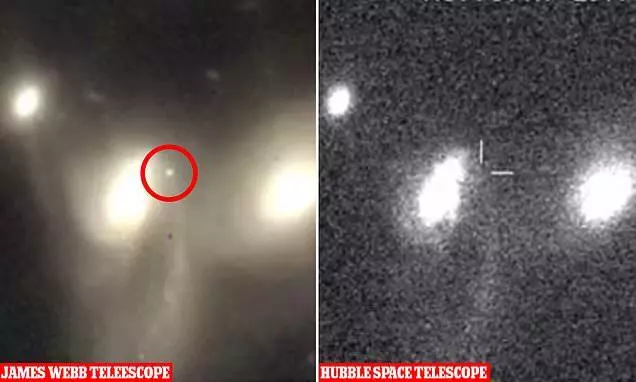3Billion light-years away, the James Webb telescope discovers the first "supernova"
It is believed that the bright light that was detected by the “James Webb” telescope of the American space agency “NASA” at a distance of three billion light years from Earth, is the first observation of the explosion of a dying star, according to the newspaper “Daily Mail”.
This explosion is known as a "supernova" or "supernova", and it occurs when a star runs out of fuel. This results in low pressure, as the cosmic body expands to at least five times the mass of our sun and then explodes, releasing tons of debris and particles.
The starburst occurred in a particular galaxy, and the James Webb Telescope captured images showing the light of an object becoming faint for five days, evidence that sparked the supernova theory.
Also exciting is the fact that James Webb was not designed to find and discover new passersby, Mike Engiser of the Space Telescope Science Institute quoted Mike Engiser from the Space Telescope Science Institute who first reported the discovery.
The potential supernova was captured using an instrument designed to detect light from the oldest stars and galaxies using a wide range of infrared light.
"James Webb was investigating the distant galaxy, so the supernova was caught by luck," Ingeser said.
The dying star, which appears as a small bright spot in the images, was not present in the images of the galaxy taken by the Hubble Space Telescope in 2011.
Engiser and his team used software designed to detect differences in images that led to a bright spot.
Achievements of "James Webb"
On July 12, NASA presented the first set of images taken by the James Webb Telescope, showing a "deep field" of a chain of distant galaxies and revealing the most detailed glimpse into the dawn of the universe ever recorded. Scientists also announced that it had revealed a 13.5 billion-year-old galaxy, which is now the oldest in the universe that human eyes can see.
The telescope was launched on the morning of December 25, aboard a giant European rocket from the European Space Agency's launch base in French Guiana.
And “James Webb” is the first observatory of NASA in the next decade, and it is the most powerful telescope ever, and it will be able to explore the oldest galaxies in the universe, the fruit of a cooperation between NASA, the European Space Agency and the Canadian Space Agency at a cost of 10 billion dollars.
The telescope was designed to be a successor and complement to the “Hubble” telescope, but it will monitor the universe at infrared wavelengths, which will enable it to penetrate dust and see the processes that led to the formation of stars and planets.
Source: agencies
https://shahbapress.net/archives/26749?fbclid=IwAR3k2o7V5DLkQd3CCDUTPUz_pzA3VvKyKUDTMUzk2RaMlYWqnIrQSH4uoYo



